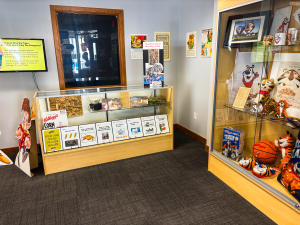The quintessential American breakfast originated right here in Battle Creek. In 1894, a batch of boiled wheat was left out overnight and became stale. It was rolled, started to flake, and became crispy when toasted in the oven.
This accidental invention was the beginning of a nearly 130-year legacy that shaped Battle Creek into the “Cereal Capital of the World.” The region’s cereal history has played a key role in American food culture, but how did one local invention cause a worldwide phenomenon?
Before your visit, explore the rich legacy of “Cereal City” and how Calhoun County celebrates its unique food heritage today, including themed events.
A Brief History of Cereal in Battle Creek
The story always starts with the Seventh-day Adventists. Founder and prophet Ellen White received a holy message: Create a healthy living institute in Battle Creek. It had a slow start, but church leaders had been fostering the talents of a young Adventist by the name of John Harvey Kellogg.
John grew up to be a character who was larger than life, an accomplished surgeon who always wore a white suit and knew all the latest trends in the medical community. He was one of America’s earliest wellness experts.
The Sanitarium program was modern in its approach: exercise, take time for self-care, and drink lots of water. Food was a big issue, though. It may sound a little funny now, but dyspepsia was a hot topic back in the 1800s. Constipation, upset stomachs, and bloating were common as Americans consumed a diet heavy in starch and animal fat.
The Sanitarium offered a vegetarian menu, free of additives, in honor of its Seventh-day Adventist roots. It wasn’t always the most palatable of food, though. One woman broke her dentures on a biscuit.
Dr. Kellogg wanted food that was easy to both chew and digest, so he enlisted his brother and started to experiment. A lot of inventions came out of the Kellogg kitchen, including peanut butter and an early version of probiotic pills. The one that changed America, though, was flaked cereal.
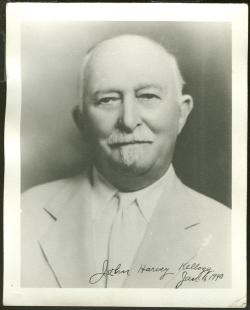
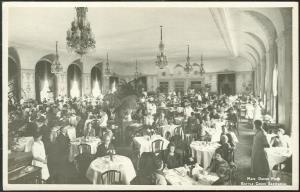
The Role of W.K. Kellogg
Dr. John Harvey Kellogg’s brother, Will Keith Kellogg (or WK Kellogg), worked as his assistant. The record gets fuzzy around how cereal was invented, but most historians agree: both brothers were involved.
WK Kellogg experimented with his brother’s invention and commercialized it into a household name after buying the rights to the flake recipe. He founded the Battle Creek Toasted Corn Flake Company in 1906 and added malt, sugar, and salt to the dough for more appeal.
Kellogg’s cornflakes soon became the breakfast food to take over America. By 1909, 120,000 cases of Corn Flakes were produced every day. For WK Kellogg, who always said, “Doing what’s right today means no regrets tomorrow,” it was the start of a legacy that would turn the Kellogg brothers’ corn flakes into one of the city’s biggest claims to fame.
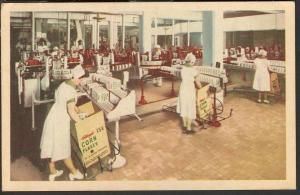
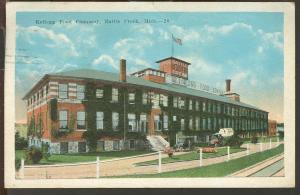
From Patient to Cereal Pioneer
Future Kellogg competitor C.W. Post, a Battle Creek Sanitarium patient, was inspired by the Sanitarium’s diet, motivating him to jump on the cereal boom.
Post launched Postum Cereal Company in 1895, with his first product being Postum Cereal Beverage. That paved the way for him to launch Grape Nuts in 1897, a cereal made from wheat and barley named for the grape sugar, or glucose, that gives it its nutty flavor. The birth of the rival empire lent a healthy competition that helped define the region’s breakfast cereal identity.
Things to See & Do in Cereal City Today
Today, the town pays homage to its rich legacy with modern attractions that celebrate its evolution as Cereal City. Several regional institutions carry the Kellogg name, including Kellogg Arena (home to events and community gatherings), Kellogg House Park (featuring the relocated historic home of WK Kellogg and its surrounding grounds), and Kellogg Manor House (offering tours of its lakeside setting).
Cereal Fest in Battle Creek is an annual celebration honoring its grain-to-bowl tradition, where you can take a seat at the world’s longest breakfast table. While you’re here, don’t forget to visit the Cereal History Exhibit at the Battle Creek Welcome Center for relics of bygone eras.
A separate visit to the Historic Adventist Village offers a three-block glimpse into the origins of the Seventh-day Adventist faith. Among its restored and replicated buildings is the John Harvey Kellogg Discovery Center, where interactive exhibits highlight his health innovations and the practices that helped make this town a renowned wellness destination.
No matter where you go in Battle Creek, there are reminders on every corner of its storied history as the Cereal Capital of the World. Explore the city’s past and present as you plan your visit and witness firsthand how cereal is an ongoing cultural landmark.

